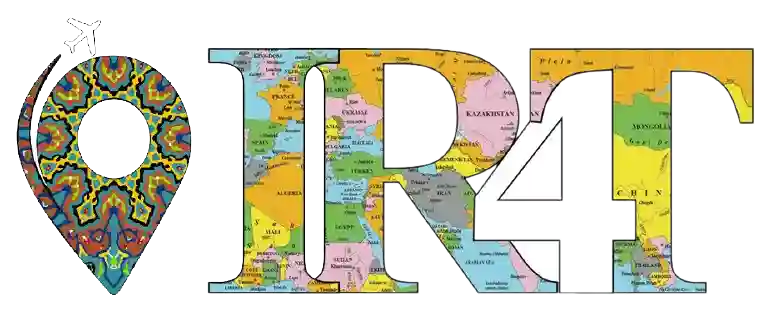Preview
Traditional Bazaars are an integral part of Iran’s history and culture. Apart from buying and finding souvenirs, these bazaars are an amazing place to learn more about the culture of Iran’s ethnic peoples and traditions. Most cities in Iran have a famous bazaar that is always crowded and busy. But do you know what the best bazaars in this country are? Follow us to introduce you, 4 best bazaars in Iran you must visit.
Top 4 Traditional Bazaars in Iran you must visit

Tabriz traditional Bazaar
When we talk about traditional Iranian bazaars, the traditional bazaar of Tabriz is the first place we should mention. This bazaar which is located in Tabriz that is known as the largest traditional indoor market in the world.
Tabriz Bazaar is built in a complex with an area of about one square kilometer. This bazaar has 11 corridors, 20 rows, 25 Timcheh, 35 Sara, and 6500 shops. Think about it! The large number of people who visit this market every day is very dazzling and interesting.
The most famous order of this market is the order of its gold sellers. It is worth mentioning that Tabriz Bazaar was restored in the early Qajar period. Tabriz Bazaar has also been registered on the UNESCO World Heritage List.
Tabriz traditional Bazaar, one of the most famous bazaars in Iran

Shiraz traditional bazaar
Vakil Bazaar is the main bazaar of Shiraz and is located in the historical center of the city in Darb’e Shahzadeh near the Vakil Mosque. It displays a beautiful architecture with wide corridors and high ceilings along with openings which allow air circulation and penetration of light. It extends from near the Isfahan Gate to where the Bazaars of the old city of Shiraz begin, and it comprises arched alcoves with wide platforms in between, and seventy four high and well proportioned arches sustaining the roof. There is a high domed crossing, where the east and west bazaars diverge from the main bazaar. Several of the main arches, and a number of intervening alcoves of the Vakil Bazaar, which were used as shops, were demolished when the Zand Avenue was extended eastwards.
Vakil Bazaar is the main bazaar of Shiraz and is located in the historical center of the city in Darb’e Shahzadeh near the Vakil Mosque. It displays a beautiful architecture with wide corridors and high ceilings along with openings which allow air circulation and penetration of light. It extends from near the Isfahan Gate to where the Bazaars of the old city of Shiraz begin, and it comprises arched alcoves with wide platforms in between, and seventy four high and well proportioned arches sustaining the roof. There is a high domed crossing, where the east and west bazaars diverge from the main bazaar. Several of the main arches, and a number of intervening alcoves of the Vakil Bazaar, which were used as shops, were demolished when the Zand Avenue was extended eastwards.
pool used to exist in the middle of the bazaar with its water being provided from the western wing of the bazaar. Gradually and as a result of the floor of the bazaar being brought up the pool is no longer in place. The tall ceilings of the bazaar combined with some simple wind towers enables the purification and steady flow of fresh air in the bazaar. Originally there were many more openings on the roof which allowed fresh air and light to penetrate the bazaar although as a result of renovations many of such openings have now been sealed and perforated openings above the shops have been put in place.

Kashan traditional bazaar
Kashan traditional bazaar, due to its beautiful architecture and having many caravanserai and beautiful buildings, is one of the most beautiful traditional bazaars in Iran. This market, like most traditional markets in Iran, belongs to the Safavid period. However, the peak in sales and traffic in the Kashan bazaar was related to the Qajar period.
An important feature of Kashan Bazaar is its location in a prosperous and historical region. For example, famous buildings such as the “Boroujerdi House” are located around Kashan Bazaar. The most famous order in Kashan market is the blacksmiths market. “No” Caravanserai and “Mir Panj” Caravanserai are also among the most famous caravanserai of Kashan Bazaar, which it is good to visit when visiting the Bazaar.

Ganjalikhan traditional bazzar in kerman.
The GanjaliKhan Complex was built by and named after a Safavid (1501–1736) commander who became the governor of Kerman in 1569. Located at the heart of the city next to the city’s Grand Bazaar, the complex spans an area of 11,000 square meters and consists of a square, bazaar, bathhouse, mosque, Ab-Anbar (water reservoir), mint and a monument.
GanjaliKhan Square is characterized by its brick arches, tilework, pool and lush landscape. The square is surrounded by the bazaar on three sides and the Ganjali Khan Monument on one side.
Ganjali Khan Bazaar is a three-kilometer long street that has Arg Gate, the entrance way to Kerman, on one end and Vakil Mosque Gate, the exit way from the city, on the other. The bazaar includes caravanserai, rows where different professions worked and numerous shops.
GanjaliKhan Bathhouse, which is located on the southern side of Ganjali Khan Square and in the middle of the Kerman Grand Bazaar, was built in 1611. The bathhouse spans a 1,300-square-meter area and includes a façade, entrance hall, changing room, Hashti (vestibule), Garm Khaneh (hot chamber), pool, private bath and boiler room. The bathhouse has wall paintings as well as moqarnas, tilework and stucco relief decorations. Ganjali Khan Bathhouse was in use until nearly 60 years ago.

